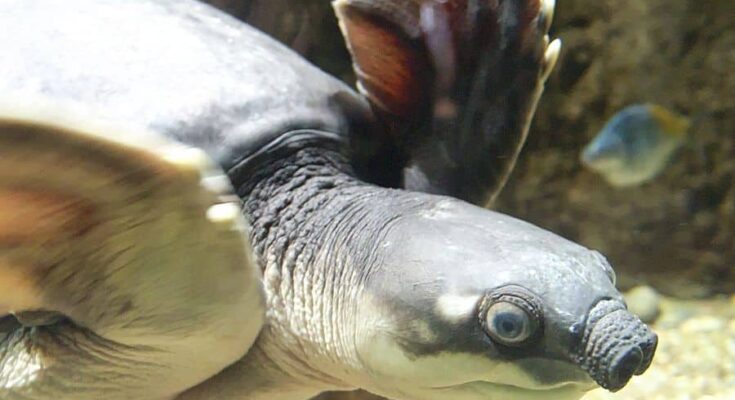Australia has added 13 more animals and plants to its list of endangered species. This move has led to fresh calls for the government to urgently update the country’s environmental laws. Among the newly listed species are the pig-nosed turtle, now considered vulnerable, the Dalhousie catfish, which is critically endangered, Pugh’s sphagnum frog, listed as endangered, and the Coffs Harbour Fontainea, a rainforest tree also critically endangered.
Other species include freshwater fish, lizards, flowering shrubs, a daisy, and an orchid, as reported by The Guardian.
Number of species at risk of extinction has risen
The total number of species at risk of extinction in Australia has now reached 2,224. The Australian Conservation Foundation (ACF) has pointed out that habitat loss and damage have harmed each of the newly listed animals, with the climate crisis making things even worse.
Several of these species were severely impacted by the devastating bushfires during the 2019 to 2020 summer.
Darcie Carruthers, a campaigner for the ACF, stated that the growing list of threatened species highlights how the country’s environmental laws are failing to protect Australia’s plants and animals from ongoing destruction.
“Forests, lizards, bush, wetlands and frogs need nature laws with teeth and a truly independent Environmental Protection Authority (EPA) to enforce them,” she said.
Australia’s Albanese government has proposed a plan to establish a national Environmental Protection Authority (EPA) as well as another agency, the Environment Information Australia, to focus on data collection. However, the government has postponed the promised overhaul of national environment laws, with no clear date set for when this will happen.
Hunter Valley Delma on the list of endangered species
Among the newly listed species is the Hunter Valley delma, a legless lizard recognized as a distinct species only since 2022. More than 90 percent of its habitat in the Hunter Valley has been damaged by open-cut mining and agriculture, according to Carruthers.
She also highlighted that the Coffs Harbour Fontainea tree is found in just two small areas of bushland owned by Transport for NSW. Unfortunately, one of these sites will be cleared for a road bypass in Coffs Harbour.
Environment Minister Tanya Plibersek has spoken of the government’s commitment to improving the protection of Australia’s “precious plants and animals.”
Since taking on the role in May 2022, she has made decisions regarding 241 threatened species and eight ecological communities, with more than half impacted by bushfires.
Listing species as threatened under the law is a step toward better protection, Plibersek said, but emphasized that this is just one part of the government’s broader efforts to safeguard native species.



